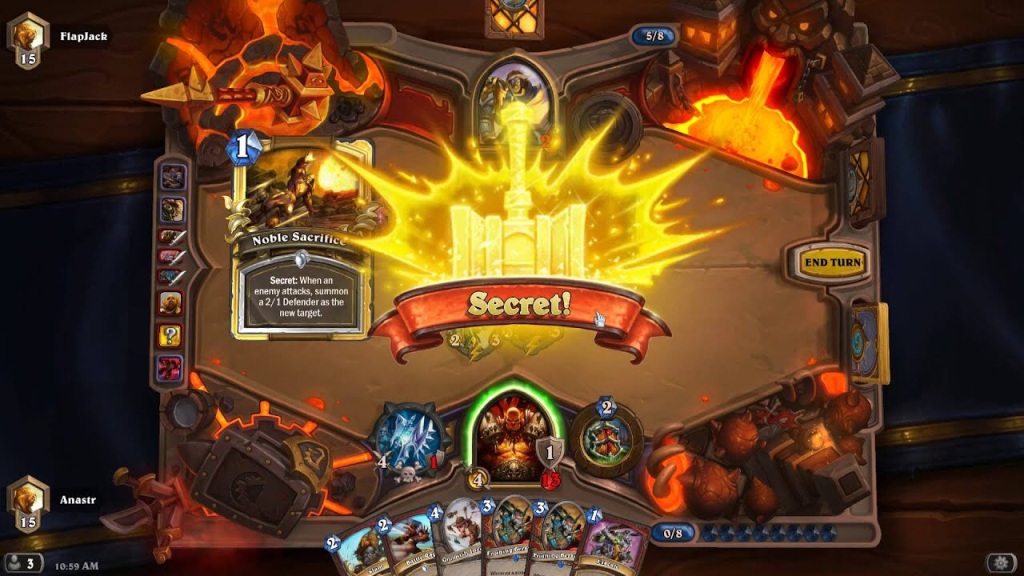Hearthstone: Heroes of WarCraft
Blizzard Entertainment
2014
PC, Mobile
Of all the games I’m writing about this month, Hearthstone is the one I’m most embarrassed to have given so much of my time and energy. A quick-play, simplified rerun of Magic: The Gathering, Hearthstone is ugly, unbalanced, and largely based on lore I don’t care about at all. I loved WarCraft III when it came out, but I never made the jump to World of WarCraft, so the vast majority of card references are totally lost on me here.
The basic premise is very familiar to Magic players. You and your opponent have 30 card custom built decks of creatures, spells, and weapons. Each turn, you get energy in the form of mana to play cards that can attack your opponent’s creatures or their life total directly. Every turn, you get more mana, so you slowly ramp up from early jabs into colossal game-defining uppercuts until you or your opponent is defeated. The game is in building your deck to be as consistent at winning as possible and defend itself from your opponents’ strategies.
The thing it took me so many years to stop admiring about Hearthstone is its dedication to using the tactility of a collectible card game, which I’ve loved since the Pokemon TCG I grew up playing and collecting, and combining that with its digital format to do things that were completely impossible (or, at least, immensely inconvenient) in a tabletop card game. One of the simplest, “Discover,” gives you an opportunity to add one of three randomly generated cards to your hand. In real life, this would require both players having a semi-unlimited number of every printed card to function – digitally, you can just give someone the opportunity to use this card they might not own for a single game.

There are mechanics that reward having only odd or even cost cards in your deck, mechanics that shuffle five random super-rare cards into your deck, mechanics that require players to only have one of each selected card in your deck (rather than the typical max of two) to get access to a special effect. These mechanics could maybe be achieved by registering with a judge before a given game or by owning a massive library of cards to play with, but they’d be onerous to track at best.
Hearthstone is at its best when it takes advantage of its digital format. Its single player adventures take advantage of asynchronous gameplay to create memorable puzzle-card gameplay. But, over five or so years, the number of mechanics forced a power creep and level of investment that made the game completely inaccessible to newcomers. I think many of its best mechanics have been lifted into other digital card games like Slay the Spire, Inscryption, and Balatro. The game’s last gasp for me was its Battlegrounds mode, a direct riff on the DOTA AutoChess mod that never quite offered anything on top of that formula other than “more money.” I haven’t played in years, and probably never will again, but I’ll always appreciate the excitement Hearthstone showed toward combining tabletop and digital card games and pushing that genre into a new era.